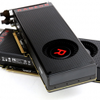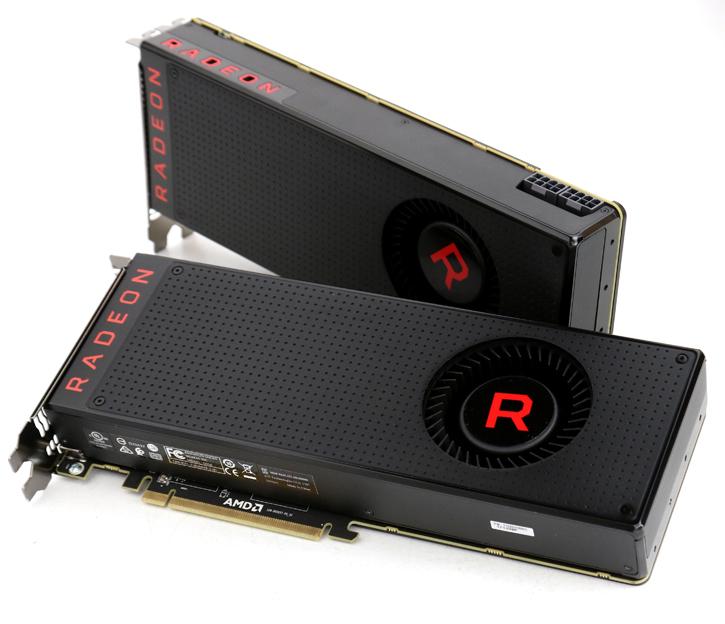Introduction
Radeon RX Vega 64 Black (8GB)
The long wait is over, 687F:C1 is here :)
It has been a long time coming for what we test and review today; yes, AMD finally releases Vega to the consumer market. It has been a long haul alright, initially everybody expected some kind of availability back in December 2016. Though AMD never admitted it, the likely culprit next to fabbing a monolithic GPU, HBM2 graphics memory was a challenge. Not just getting it in good quantities, HBM2 pricing has been adding up as well. The lights for HBM2 are slowly going green though, we hear more companies now pursuing HBM2 to use and fab. Right now it is Summer 2017, and Vega for consumers has arrived. We have a lot to talk about and to show you today. As you know, the Radeon RX Vega series is AMD's most high-end graphics card series which they will be positioning into a gaming domain of 2560x1440 as well as Ultra HD gaming. VEGA, named after that star, of course. Vega, also designated Alpha Lyrae (α Lyrae, abbreviated Alpha Lyr, α Lyr), is the brightest star in the constellation of Lyra, the fifth-brightest star in the night sky and the second-brightest star in the northern celestial hemisphere, after Arcturus. It is relatively close at only 25 light-years from the Sun, and one of the most luminous stars in the Sun's neighborhood. Vega has been extensively studied by astronomers, leading it to be termed “arguably the next most important star in the sky after the Sun. The traditional name Vega (earlier Wega) comes from a loose transliteration of the Arabic word wāqi‘ meaning "falling" or "landing", via the phrase an-nasr al-wāqi‘, "the falling eagle". A lot has been said and spoken regarding this graphics card series. Earlier this year you have seen AMD's Mi25 series release as well as the Radeon RX Vega Frontier Edition. VEGA for consumers, or Radeon RX Vega 64, will offer you a comfortable 12.66 TFLOPs of single precision (fp32t) game performance. You guys have seen all the rumors, leaked benchmarks and FE edition results. Fact is that the product will battle the reference clocked GeForce GTX 1080, which is rated at 9 TFLOPs and the GeForce GTX Titan X (Pascal) at roughly 11 TFLOPS. This means that AMD can position itself at a rather comfortable position in the PC gaming domain. And the discussion of whether or not Vega arrives too late to the market is something only the end-user can decide.
AMD today announced their Radeon RX Vega 56 and 64 series graphics cards, there will be two air-cooled models initially, called the Radeon Vega 56 and 64 as well as a Vega 64 liquid cooled edition. The numbers in the suffixes are based on the actual shader clusters and thus you are looking at two air-cooled graphic cards initially being released, one with 3584 and one with 4096 shader processors. These are priced at 399 and 499 USD for the standalone air-cooled versions respectively. There will also be a liquid cooled edition that is clocked faster at a price of 699 USD, which does come with a bundle. The three cards are due for release and availability in August. Today we test the reference Radeon RX Vega 64 8GB, a lot has been said and spoken about the multiple SKUs that AMD is to release. Obviously a reference card is just that, the board partners will offer their own revision of Radeon RX Vega with customized PCBs, factory tweaks and efficient cooling solutions. So first, meet the Radeon RX Vega 64 (Black), the GPU has 4096 stream processors. The GPU is clocked at a boost-able 1546 MHz and has been fitted with 8GB of HBM2 graphics memory. Let's say 'hi' to it first...
Radeon RX Vega 56 and 64


